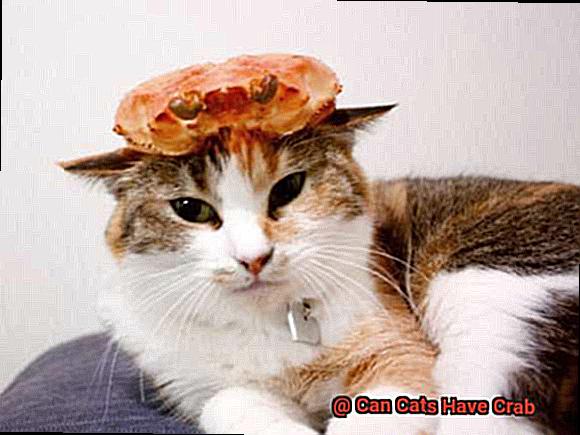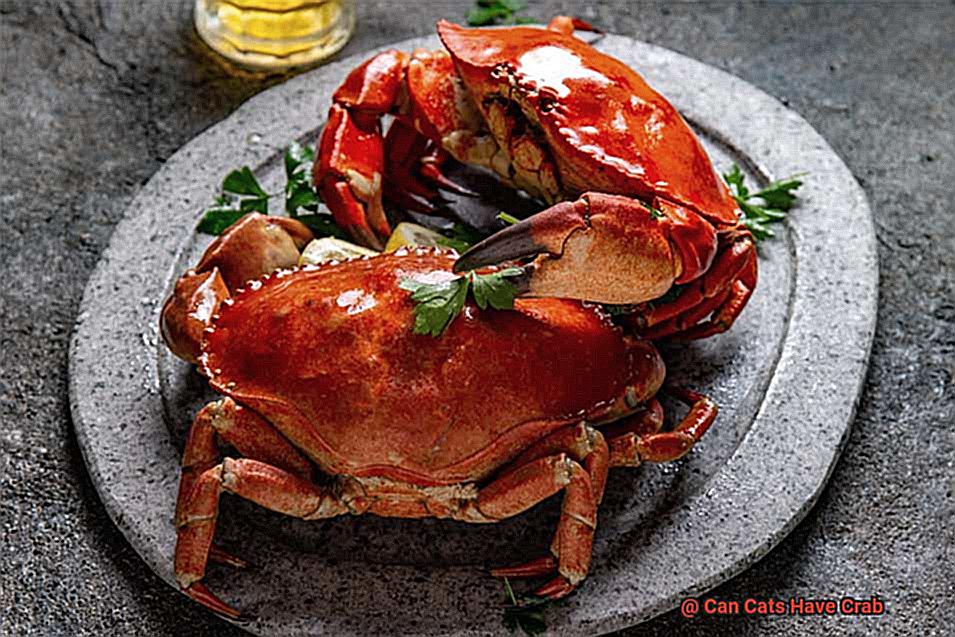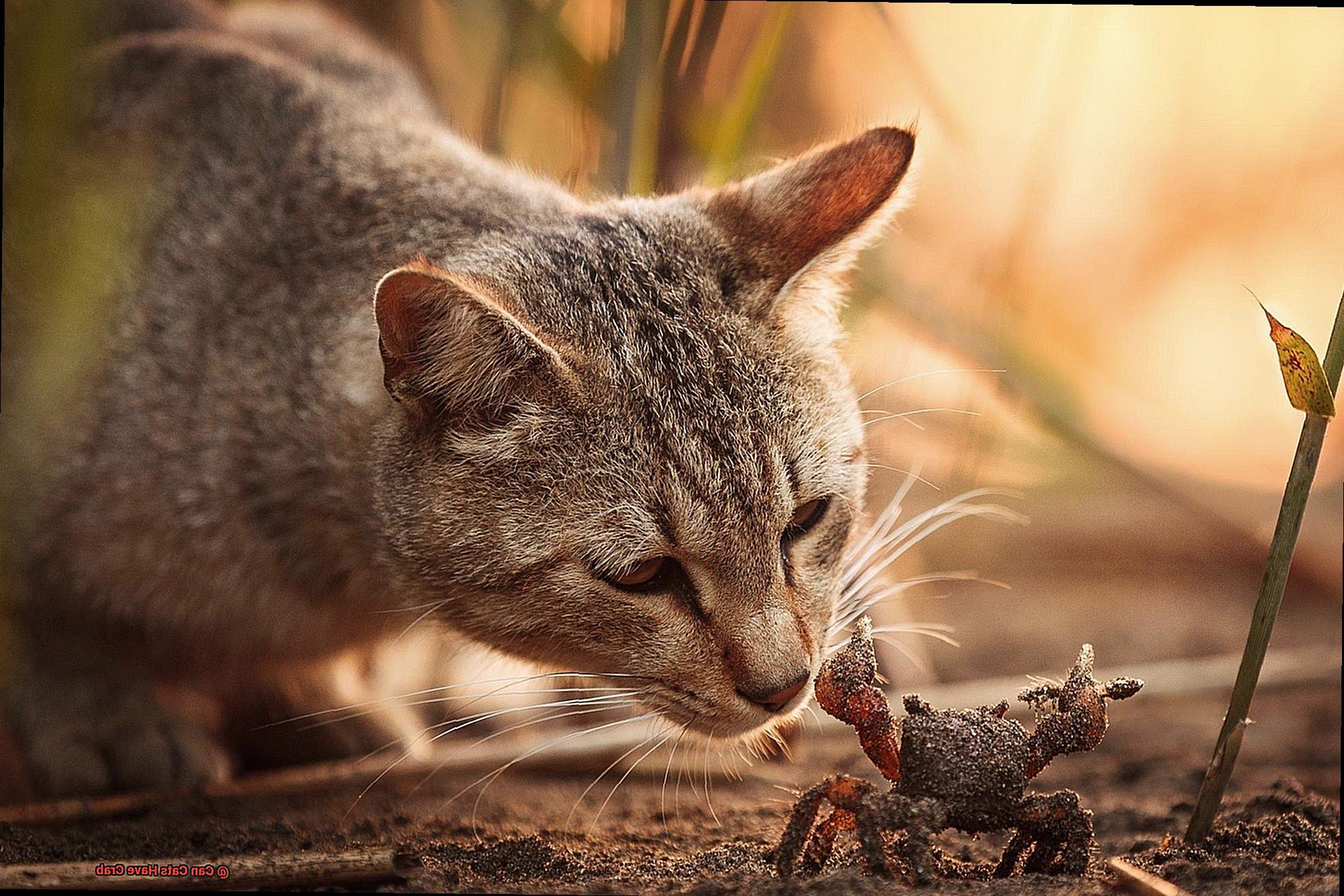Can cats have crab? Yes, cats can enjoy crab as part of their diet. But there are some important things to consider before giving it to your feline companion.
Crab is a great source of lean animal protein for cats. It’s high in protein and low in fat.

However, moderation is key when feeding crabs to cats – just like any other food. Seafood can cause an upset stomach or even an allergic reaction.
When feeding your cat crab, make sure it’s cooked thoroughly and cooled before serving it. Raw or undercooked seafood can be contaminated with disease-causing bacteria that could make your cat sick – or worse.
Also, avoid giving them canned or canned crab because they often contain preservatives and ingredients that may be harmful to cats. In addition, check if your cat is allergic to seafood in general before introducing them to crabs.
If they’ve never had seafood before, start by small amounts and watch their reaction closely for any signs of an allergic reaction such as vomiting or diarrhea. Overall, cats can have crab as part of their diet – but do so safely.
When giving your cat this tasty treat, make sure you enjoy all the benefits without putting their health at risk.
What Types of Crab Can Cats Eat?

Cats love a taste of the sea, but not all types of crab are safe for them to eat.
Feeding your furry friend the wrong kind of crab can cause serious health issues, so it’s important to know what types of crab can be safely enjoyed by cats. Cooked crab meat is an excellent source of protein and minerals for cats, but should be given in moderation due to its high sodium content.
Crab sticks and imitation crab meat should also be avoided as they contain preservatives and dyes that can be harmful to cats. Crab legs may look like a tempting treat for your cat, but they contain high levels of cholesterol which can cause digestive problems if consumed in excess.
Crab Sticks and Imitation Crab
If your cat is a fan of seafood, you may be tempted to share some treats made from crab sticks or imitation crab.
But before you do, it’s important to understand the risks and benefits of these products. These foods are generally safe for cats and contain some protein and other essential nutrients.
However, they may also include additives or preservatives that could be harmful. Additionally, real crab meat offers more nutritional value than crab sticks or imitation crab.
To prevent any digestive upset caused by cholesterol, make sure to cook it first.
Crab Legs and Choking Hazards
When it comes to treating your beloved feline companion, crab legs may seem like a delicious and nutritious option.
However, before you get too excited about giving them as a snack, it’s important to consider the potential choking hazards that come with feeding cats crab legs. Cats have a tendency to swallow their food whole – this can be especially risky when it comes to larger portions of food or bones, such as those found in crab legs.
If swallowed, the small, sharp bones in crab legs can cause serious damage to a cat’s digestive system.

Therefore, if you do choose to give your kitty companion some crab legs, make sure they are fully cooked and remove any bones or shell fragments before offering them up.
To minimize the risk of choking even further, cut the crab meat into small pieces. If your cat does choke on a piece of food, act quickly.
If the object cannot be removed or your cat is still having difficulty breathing, seek immediate veterinary attention.
Crab Rangoon: Not Suitable for Cats
While it may be a delicious treat for humans, it’s not something that cats should be eating. Think of it this way: To us, Crab Rangoon is like a big, juicy steak – but to cats, it’s more like a greasy hamburger.
Even though hamburgers aren’t particularly bad for us, they’re not something we should be eating every day. The same is true for cats and Crab Rangoons.
The main issue with Crab Rangoon is that it contains high levels of fat and potentially toxic ingredients such as garlic and onions. These can cause digestive problems in cats such as vomiting and diarrhea, as well as anemia and damage to red blood cells.
Cooked Crab Meat: A Healthy Treat?
Cooked crab meat is a delicious and healthy treat that can be safely shared with your feline friend.
Packed with protein, vitamins, and minerals, this seafood dish can help promote your cat’s overall wellbeing. Plus, it’s safe for cats to eat in moderation as long as it is properly cooked and served plain without any seasoning or sauces.
However, just like humans, cats need a balanced diet and should not be relying on treats alone. Although cooked crab meat is a tasty treat occasionally, it should not be a regular part of your cat’s diet.
Raw Crab Meat: Dangerous for Cats
Raw crab meat is not a safe option for cats. It can be contaminated with harmful bacteria, parasites, and an enzyme called thiaminase that breaks down thiamine or vitamin B1 in cats.
Consuming raw crab meat can lead to food poisoning, gastric problems, neurological issues such as seizures and loss of coordination, and even coma.
Cooked crab meat is safer for cats to consume but should still be given in moderation as part of a balanced diet.
Are Crabs a Source of Pubic Lice?
When it comes to cats and crabs, the two don’t mix.
Although cats may enjoy the occasional lightly cooked crab, they should avoid consuming raw crab meat as it can expose them to parasites and bacteria as well as an enzyme that could damage their nervous system. But what about pubic lice? Can cats catch pubic lice from crabs? The answer is a definitive no.
While humans are known to be susceptible to pubic lice, cats are infested with Felicola subrostratus lice that attach themselves to cat’s hair shafts. These lice are not dangerous and do not transmit any diseases to humans.
Therefore, if you’re wondering whether your cat will have pubic lice from crabs, the answer is a clear no.

4CmKWyNuj-I” >
Seafood Sticks and Other Processed Products
Seafood may be an appealing treat for cats, but it’s important to know that seafood sticks and other processed products containing crab are not suitable for feline consumption.
These products are typically high in sodium, preservatives, and artificial colors, and offer little to no nutritional value. Furthermore, they can contain pubic lice which can cause irritation, inflammation, and infection in other animals and humans.
For your cat’s health and safety, stick to natural foods that meet their nutritional requirements without the risk of any additional harm.
Also Read: Can Cats Eat Crab Meat? – 21Cats.org
Conclusion
In conclusion, cats can enjoy crab as part of their diet, but there are a few things to keep in mind.
Cooked crab meat is a great source of lean animal protein and minerals for cats, but it should be treated with caution due to its high sodium content. Avoid canned or imitation crabs as they often contain preservatives and ingredients that can be harmful to cats.
Lastly, raw crab meat should never be served to cats due to the risk of infection with bacteria, parasites, and an enzyme that can damage their nervous system.







